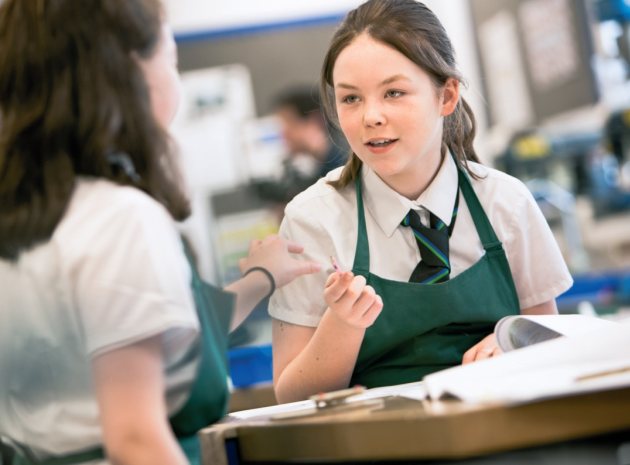Innovative , creative thinking and problem solving should be at the heart of a strong D&T curriculum , says Andy Mitchell - But developing students practical skills as important…
Leading up to 1999 and since the introduction of D&T in the school curriculum, the predominant experience pupils have had of the subject, has revolved around completing ‘projects’. These have been selected by teachers to ensure that a range of skills and knowledge can be taught and learnt. But let’s examine that further. All too frequently, the skills, knowledge and understanding have been selected first and foremost from a list of largely craft and manufacturing capabilities associated with a number of (unhelpfully) classified materials – for example ‘resistant’ materials.
Further, schemes of work have been developed around a collection of ‘good ideas’ for design briefs that allow for aspects of the relevant programme of study to be addressed. The project experiences have been provided by teachers who usually have a well-developed expertise in one or more ‘focus’ areas and organised in a rotation, solely for the purpose of ensuring each area is taught for approximately the same time. This bothers me, as does the nature of many of these projects. I frequently question their value today. Some years ago I recall writing an article entitled ‘I made one of those when I was at school’, followed by another, ‘My dad made one of those’. The titles reflected my concern then and now, that in too many schools, the same project tasks are being rolled out each year virtually unaltered.
Attempts to justify this have included pointing out how they now incorporate the use of CAD or high tech manufacturing equipment or electronics. But as an ex-colleague of mine used to point out during a period when we were developing a series of alternative tasks for which there was no precedent, when assembling a quartz clock face, even if you cut the acrylic sheet with a laser cutter instead of a coping saw, it’s still a clock! We need to pay more attention to the subject’s outward face and the nature of the challenges. In short we need to modernise the experience.
Now I’m not the first to point out that, even if acceptable before, drawing up a list of projects is no starting point for a D&T curriculum. The redefined purpose of study statement in the new Programmes of Study and the references to starting points, working from contexts, iterative design processes and user centred design for example, all point toward a subject that has at its heart designing, creativity and innovation. D&T exists as a national curriculum subject due to the valuable and widely transferable skills, values and attitudes it develops. This happens through designing things, all of which involve pupils in some decision making, with some providing almost complete autonomy.
Hands on
But that is not to devalue the importance of making skills. The February 2013 draft of the new programmes of study was quite rightly castigated as completely out of synch with the needs of a 21st century technological world. Thank goodness we were able to influence policy makers to adopt a far more appropriate and relevant version and change it! It was seriously bad. But one thing is clear – whoever the authors of that draft were, they were correct in one thing, namely that D&T is about practical activity, using skills, knowledge, materials and processes to make things. And yes, on frequent occasions, I use the very same skills it develops to service or mend things too! This in an age when sustainability has never been more of a priority is wholly appropriate. So what priorities do the new programmes of study place on pupils’ necessary skills at KS3?










